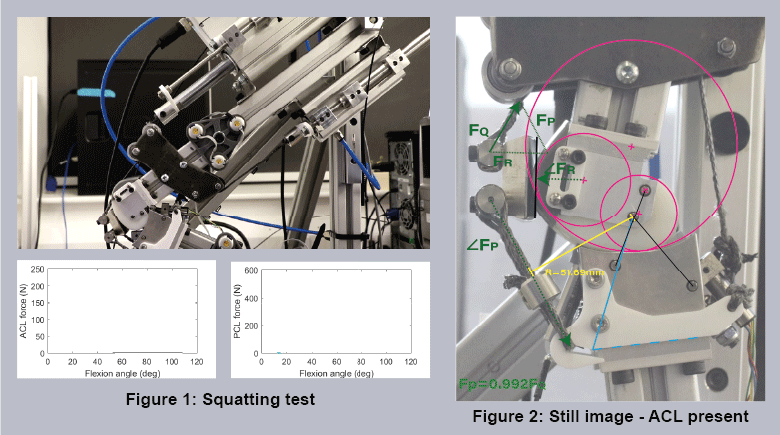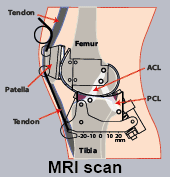
This paper presents a study of the interaction of the cruciate ligaments and patella (knee cap) and their impact on human knee biomechanics. Traditionally biomechanical studies have used human subjects (in vivo), cadaver samples (in vitro) or computer models (in silica). Experimental limitations mean that these methods are often unable to record repeatable data for the dynamic movements that humans perform in daily life. As such, the interaction of the patello-femoral and tibio-femoral joints with ligaments and its impact on joint mechanics and movement is not fully understood.
To address this, we construct a sagittal plane robot comprised of: 1) elastic links representing cruciate ligaments (ACL and PCL); 2) nylon and steel joint surfaces; 3) a patella; and 4) actuator hamstrings and quadriceps. Stiffnesses and geometry are derived from human data. Squatting tests are then executed at speeds of 0.1Hz – 0.25Hz (Figure 1) and kinematic and force data is recorded. The model shows that increasing ACL length compromises joint stability and kinematics, yet does not impact quadriceps mechanical advantage and force required for squat. The geometry of the condyles allows the ratio of patella tendon to quadriceps tendon force (Fp:Fq) to compensate for contact point changes imparted by the removal or loosening of the ACL (Figure 2). Thus, the system maintains a constant mechanical advantage. This helps explain why those who suffer from ACL tears are still able to walk despite joint instability. The findings contribute to our understanding of knee ligament damage and may inform procedures for knee surgery and orthopaedic implant design. Additionally, the results demonstrate that replicating the design of the human knee could have useful applications in mechanical systems such walking robots and prosthetic legs.

